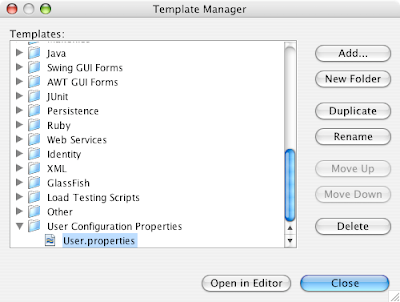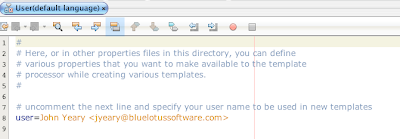I just completed reading
Release It! by Michael T. Nyggard (Pragmatic Bookshelf 2007). It is part of The Pragmatic Programmers series. I have read the book cover to cover twice. At first, I thought that the book was just another book on how to manage projects. So What! The ideas presented in the book were common sense. I have been doing these same things for many years.
Then one day I was working on a project, and was trying to figure out how to handle a problem. I remembered what I read in
Release It! about the topic. I grabbed the book off the bookshelf and looked it up; logging. The ideas presented are common sense, but how often have we missed to boat. The ideas presented in the book I implemented much to my own joy. The result was a customized deployment of the Java Logging system which is simple to maintain and does not require external libraries.
It was at that point I realized the brilliance of the book and the pragmatic side of things. I re-read the book. As an architect, project manager, developer, and maintainer of complex software ecosystems, the ideas in the book provide a "pragmatic" common sense approach to handling situations. The book is a learning tool, one person's personal perspective on software design and deployment, and a reference. It is an all-in-one book.
This book provides a great tutorial on how to manage complex projects for the novice, and a gentle practical reminder to the seasoned architect/project manager.
The book is divided into 4 major sections: Stability, Capacity, General Design Issues, and Operations. The first two sections provide the basis for the remainder of the book. The Stability and Capacity sections have divided the topic into an explanation, followed by general design patterns and anti-patterns. It explains in enough detail how to implement good patterns and recognize bad ones.
The section on General Design covers items like Administration and Security. There is nothing earth shattering in these sections, but they do provide a basis for a "check list" of items to make sure you consider in your designs.
The final section on Operations is the one where you will make friends with your administrators and keep your sanity. The portions on designing for monitoring including logging will be your savior at 2:00 AM in the middle of a blizzard. The discussion on designing for the future does not get enough attention in our modern get it out the door now world. This may be the push you need to think about it.
This is a book to have on your bookshelf. Mine is full of tabs and post-it notes.
 You then add the line to the of the properties and save. Any java source files created now will contain the Apache 2.0 license.
You then add the line to the of the properties and save. Any java source files created now will contain the Apache 2.0 license.

